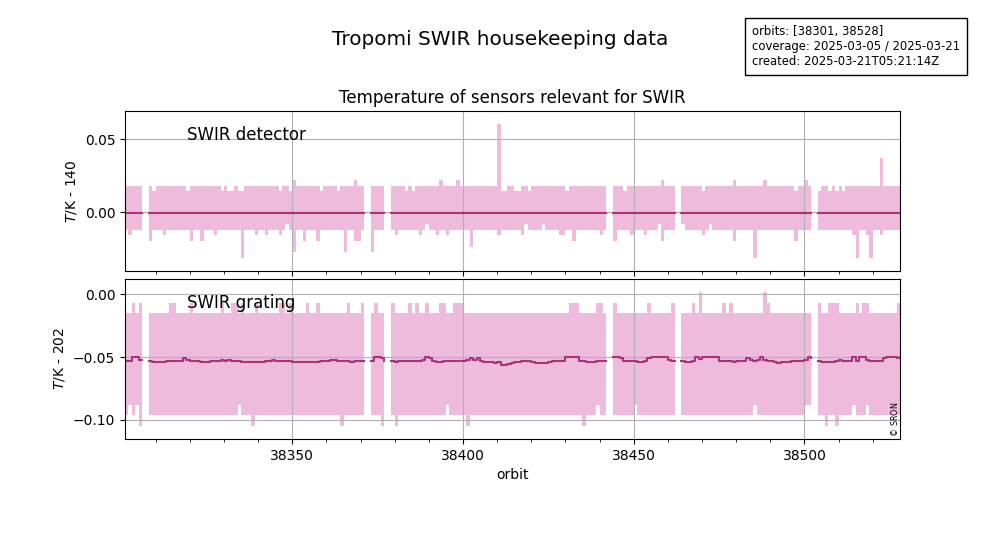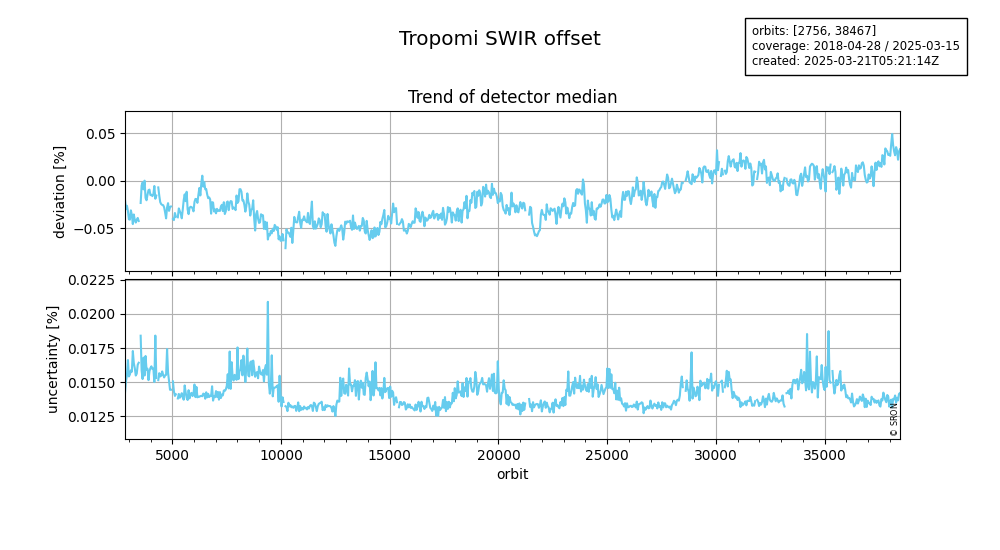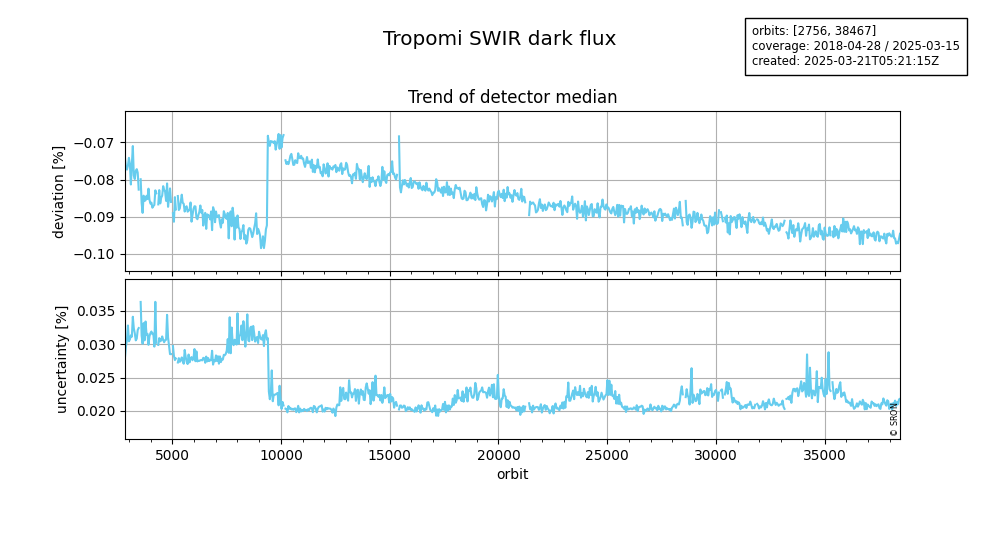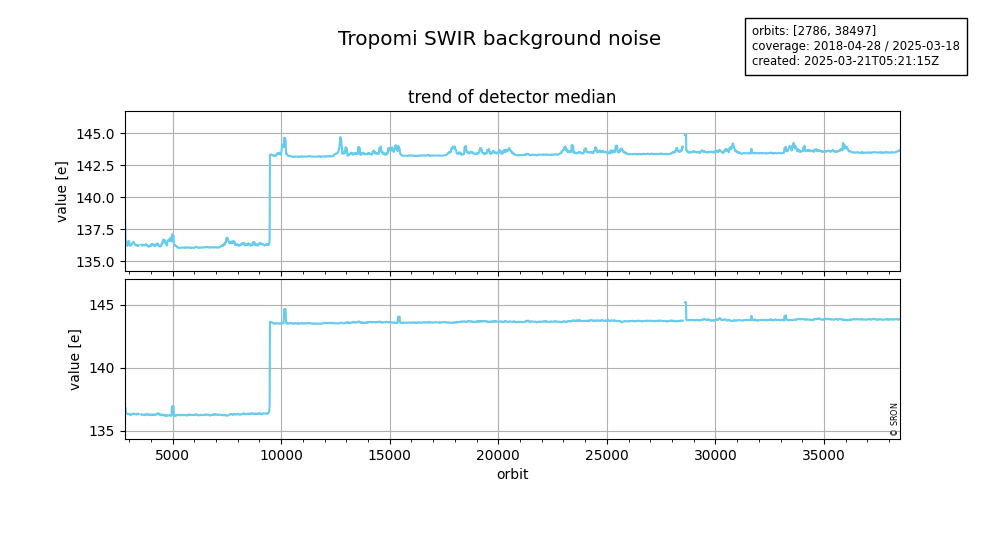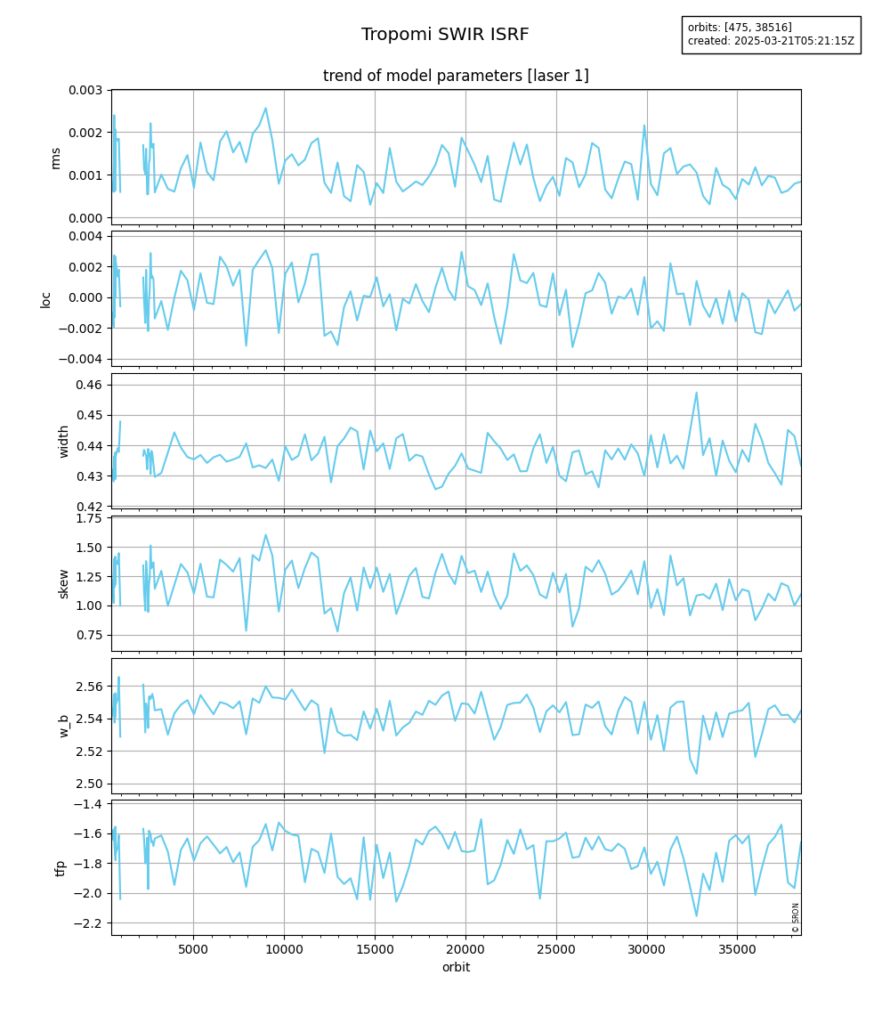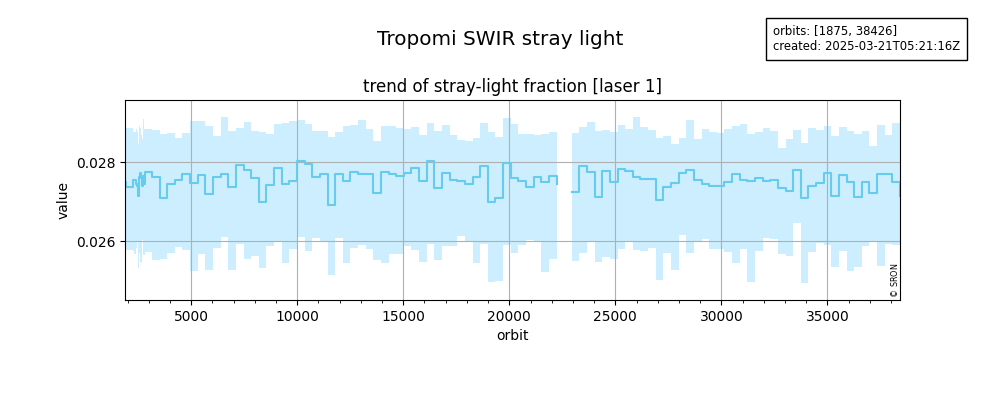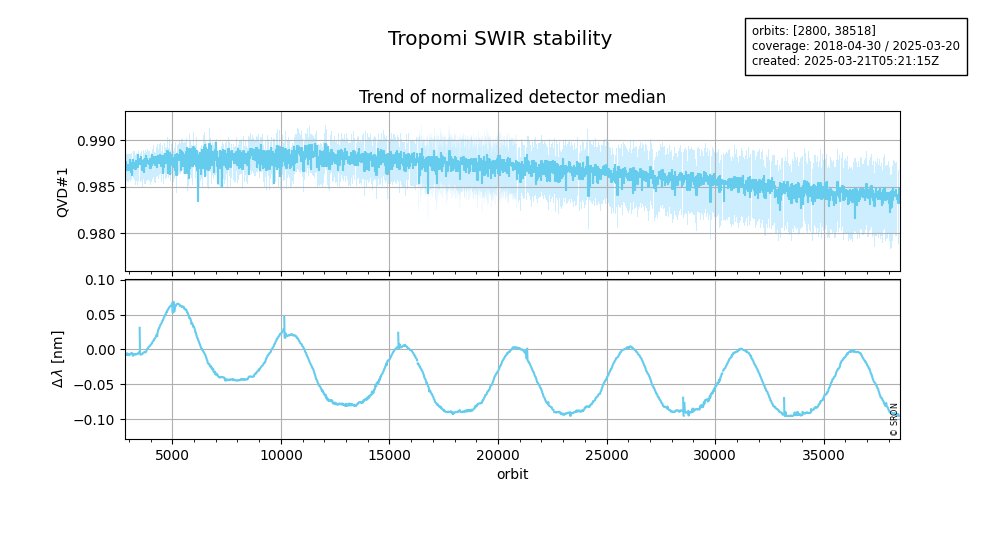The Tropospheric Monitoring Instrument (TROPOMI) is the single instrument on board the ESA Copernicus Sentinel-5 Precursor (S5P) satellite, launched on 13 October 2017. Copernicus is the European Union’s Earth observation programme.
The TROPOMI instrument maps the Earth’s atmosphere using two spectrometer modules behind a common telescope, one covering the ultraviolet-visible (270—495 nm) and near-infrared (675—775 nm), and the other covering the shortwave infrared (SWIR) spectral range 2305—2385 nm. The spectral resolution of the SWIR spectrometer is about 0.25 nm with a spectral sampling interval of typically 0.1 nm. The TROPOMI instrument measures sunlight reflected by the surface and atmosphere of the Earth via the radiance port. Direct sunlight is measured via the irradiance port and internal diffuser for calibration purposes [veefkind2012]. The SWIR spectrometer (developed by SSTL, United Kingdom) consists of a slit, collimator mirror optics, an immersed grating [developed by SRON, amerongen2012], anamorphic prism and camera optics consisting of multiple lenses, and a HgCdTe detector (developed by Sofradir, France). The detector has 1000 columns in the spectral dimension and 256 rows in the spatial dimension of which about 975 columns and 217 rows are illuminated. The TROPOMI-SWIR band is used for the retrieval of atmospheric trace gases carbon monoxide, methane and water vapor. In order to keep these data reliable, it is vital to monitor the health of the SWIR instrument and to review the calibration data used in processing the raw instrument data from level 0 to spectral (ir)radiances in level 1b [kempen2019]. Results of this monitoring during commissioning (phase E1) and nominal operations (phase E2) are published here. They include nominal results derived by the in-flight calibration and monitoring (ICM) processor and L01b processor, as well as alternative versions for development or to investigate certain instrument features.
Monitoring results for the UV, UVIS and NIR channels, as well as detailed information of the housekeeping data of the entire instrument can be found at the TROPOMI portal.



